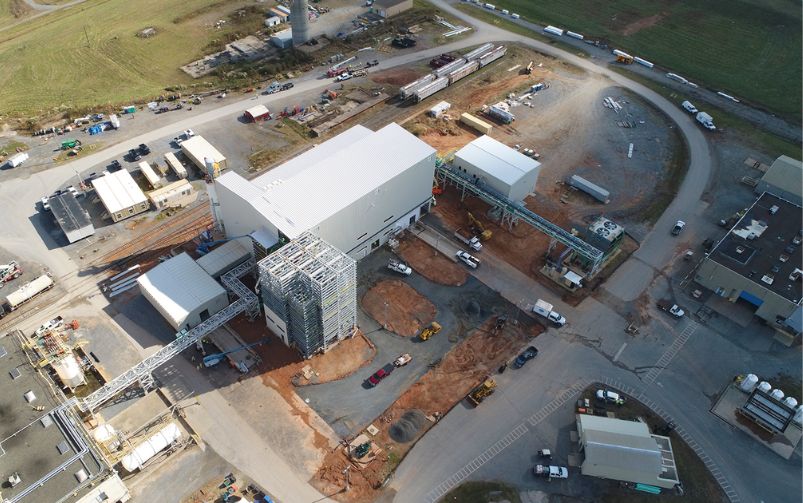Anglo American's Quellaveco project in Peru was among the case studies presented at the CIM Capital Projects Symposium. Courtesy of Anglo American.
Financiers, consultants, project proponents and management professionals came together in Vancouver this week to detail the current project landscape and leading practices at the third edition of CIM’s Capital Projects Symposium, held Nov. 19 to 21.
Keynote speaker Sam Houston, principal and founder of Strategist Solutions, explained to the 250 attendees that the aim of the event was “to develop resilient growth strategies from the outset of project conception to the development phases.”
Speakers addressed the fundamentals of project execution, intervention when things do not go according to plan, as well as the risk that trust earned by early engagement with local communities can be lost during the essential planning and study phases.
“We aren’t an industry that can build in two days like a coffee shop—it takes years. Ownership changes, management changes, there are cultural changes. Communities resent that,” said Monica Ospina, owner of O Trade and Market Access, in the first session of the conference. She advocated for groundwork to map out local capacity to support the eventual development and operation that is key during such periods. Do not ask communities what they need; ask what they can do, she advised. This request, in Ospina’s experience, is always well received because it recognizes “the dignity of work, which is the pride of every single individual to provide and be useful.”
A day of workshops preceded the two-day main event. Garth Kirkham, co-chair of CIM’s Mineral Resource and Mineral Reserve committee, addressed “NI 43-101 and project development” and Troy Dunow, director of mining and metals at Turner & Townsend, led a session on “Construction estimating for non-estimators.” The symposium itself was divided into four sessions, each with its own keynote, presentations and panel discussion, and focused on distinct themes: “How major projects can change the future of mining;” “Development and project financing;” “Project execution (Case studies)” and “Contracting models.”
On financing, Candace MacGibbon, who sits on multiple boards including Osisko Gold Royalties, highlighted new sources of capital for junior miners beyond major and mid-sized miners. “This really has changed in the past couple of years to include your OEMs, because your car manufacturers are looking for critical minerals and they may actually be a source of financing,” she said. She also suggested that governments may be more likely to fund critical minerals projects. “It may take years and years and there’s some debate as to whether or not those governments will actually distribute those funds and to whom they will, but nonetheless it is exciting that they’re possibly available to us.”
The second day of the event zeroed in on project execution. Christian Cloutier, projects general manager for Quebec Iron Ore, emphasized the need for team building. “I always have a line item in my budget called the fun fund,” he said, noting that is something he is prepared to go overbudget on. Trust and team spirit makes for better communication and accountability, he said.
Inevitably, some projects go into the ditch and need to be pulled back out. George Greer, senior vice-president of project development at Pan American Silver Corp., offered several strategies learned from his decades in the industry, including freezing the work completely to understand everyone’s place in the project. “What I’ve always done is have everybody write half a page and post their roles and responsibilities to make sure they know what their role in the project team is,” he explained. “It’s amazing what you get back from those sheets of paper, and then, through cross-matching, you can identify a need for a little bit of reorganization.”
Discussion of contracting models included an overview of alliance contracts, a more collaborative model for megaprojects that is meant to help reduce the risk of litigation, and which has not yet been widely applied to mining projects. Augusto Patmore, managing director for the construction advisory firm Alvarez and Marsal, explained how the alliance model applies a different lens in evaluating potential partners that focuses on criteria beyond credentials and technical know-how: “The interview process that takes place could also rank bidders based on their communication style; based on their ability to collaborate; based on their ability to listen and their level of empathy in a discussion.”
Applying the leading practices discussed in the symposium will be essential, noted Ian Pearce, a mining industry veteran, and the conference chair, in closing the conference. He pointed out that as the demand for minerals continues to grow and relatively few projects are being built, the squeeze will be on the industry to improve its project delivery track record.
“I think back to my time in the oil sands and four oil sands producers were all going to build their projects, but at the same time, and nobody was going to blink,” Pearce said. “And you saw what happened to those projects; they were way, way over budget. And they were way, way, way late.
“There is going to be pressure put on us to bring metals to the market.That’s going to be a real challenge for us.”
Presentations from the 2023 Capital Projects Symposium will be made available for viewing on CIM Academy in early 2024.
The next symposium will be held in Toronto in the fall of 2024.




